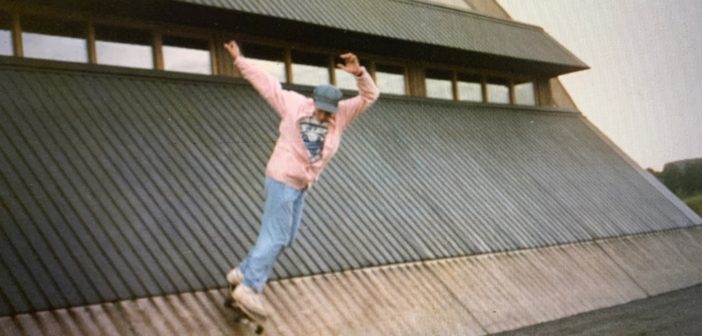Rise and grind.
Many of us have hobbies. Reading, sewing, swimming, running — but few of us live on the edge with risky hobbies such as skateboarding. From 1990 to 2008 an unprecedented 1,226,868 children were injured in the U.S.
But the idea of injury doesn’t occur to those enthralled with the sport. When you stumble upon a weathered skateboarder, you’ll hear lingo like “ho-ho,” a term used by Stephen Caliendo, dean of the College of Arts and Sciences and professor of political science. He mentions this to describe his first injury.
“A ho-ho is when the board balances when the skater inverted,” said Caliendo. “The deck came down sideways, causing a slight fracture of my finger.”
A study between 2006 and 2017 showed a decrease in the number of skateboarders in the U.S. This is often attributed to injuries sustained by adolescents.
This didn’t deter Caliendo’s love for the sport, which started back when he was 14 in Greensburg, Pennsylvania.
Even though he skated competitively, he never intended it to turn into a career.
“This was a hobby. I never had any serious aspirations about it being a career, though it consumed my life for the better part of four years,” said Caliendo. He insists the love was for all aspects of the sport.
Caliendo finds it ironic that in his skateboarding days he never wore a helmet, except on half-pipes and bowls. Now he confesses this is embarrassing for him to admit. Because he never perceived the sport as dangerous. But now that his nine-year-old son has been given his first skateboard last fall, Caliendo insists that he wear a helmet.
According to Caliendo, skateboarding as an amateur most likely won’t make an athlete very much money, if any at all, unless you are of pro status. Although these days the line between amateur and pro is very thin regarding income.
But it seems that the sport is more than that, as though the burning desire never goes away. Caliendo explains his deep attraction to skating was the creativity and athleticism of the sport.
“I liked feeling in tune with the (concrete) environment (and) looked forward to landing difficult tricks and to encouraging my friends to find and perfect new combinations in unique settings,” said Caliendo. “I loved other aspects of the scene, as well, such as street art and punk rock music.”
Caliendo concedes he was unable to pursue the sport further because he couldn’t find the time while attending college. He thinks he’d like to skate again when watching the pros on television. However, Caliendo remains realistic about what his 48-year-old body can do.

